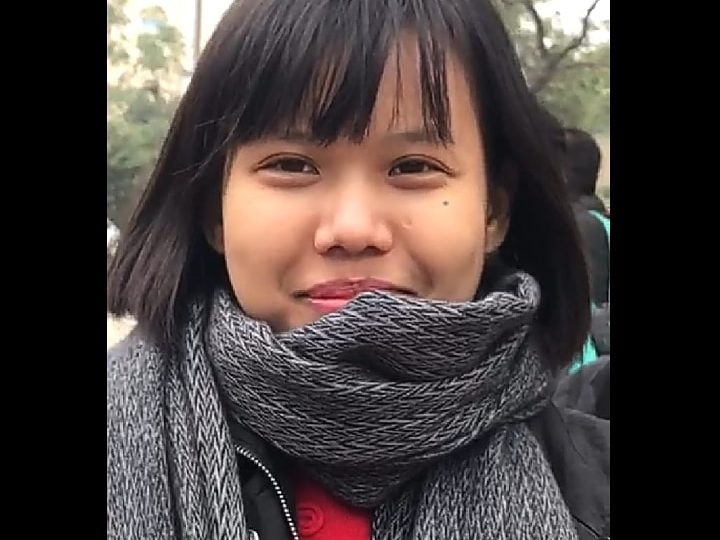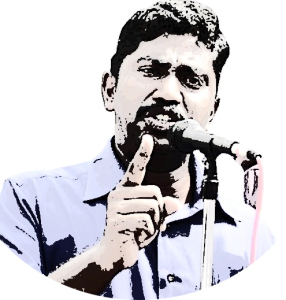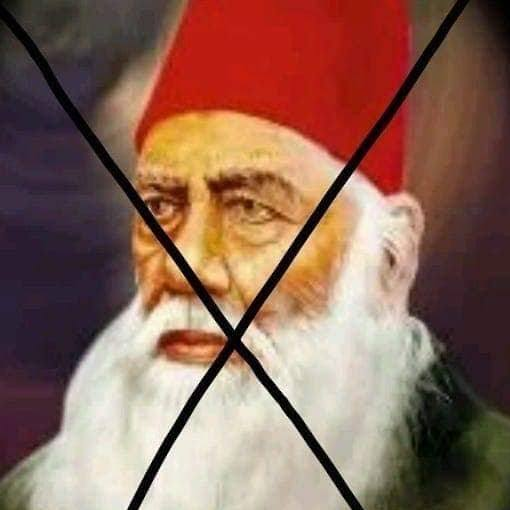Chongtham Rameshwori
 My phone records 9:21 pm with the first picture of my favourite but unfortunate black T-shirt splattered with the thick pungent tobacco remains over my neck and chest area. On 22nd March 2020, after the nationwide curfew ended at 9 pm, I went outside with my friend to buy some groceries, to restock our supplies if we could, since a nationwide lockdown was about to begin on the very next day. We bought a medium-sized cabbage, one bottle gourd and an eggplant for 100 Rs and were on our way back to our PG, passing through the same alley which I have been passing for the last seven years. Except for a few street dogs, the street wore a completely deserted look and we saw a middle-aged north Indian man driving towards us from the opposite direction.
My phone records 9:21 pm with the first picture of my favourite but unfortunate black T-shirt splattered with the thick pungent tobacco remains over my neck and chest area. On 22nd March 2020, after the nationwide curfew ended at 9 pm, I went outside with my friend to buy some groceries, to restock our supplies if we could, since a nationwide lockdown was about to begin on the very next day. We bought a medium-sized cabbage, one bottle gourd and an eggplant for 100 Rs and were on our way back to our PG, passing through the same alley which I have been passing for the last seven years. Except for a few street dogs, the street wore a completely deserted look and we saw a middle-aged north Indian man driving towards us from the opposite direction.
I was just wondering why he slowed down his vehicle and was driving really close, my gut telling me that this man was about to say a word or probably attack me when all of a sudden he spat his tobacco paan at my face, like I was a pile of garbage or a roadside drain where he could spit the dirt off from his mouth. He shouted “corona” as he quickly drove away. I tried to run after him but could only shout back. The stinking paan juice entered my eyes and the disgusting paan remains fell on my chest, my hair and on the mask that I was wearing. He did not stop his vehicle, did not turn to look back and drove away like nothing happened. There was no one around, and even if there was, I did not expect any help from mainland Indians, let alone a kind word. Too shocked to react or even utter a word and my eyes burning from the dirty chewed paan, the first thought that occurred to me was to go back to my room and wash it off. Scared of having contracted any disease and extremely terrified amidst the covid pandemic, I rushed back to my PG, took a bath and changed my clothes, all the while shaking with anger.
I have been staying in Delhi since 2013 and have been called the usual racial slurs like “chinky, momo, Nepali, Chinese” innumerable times but have never faced such an horrendous attack. This man was intentionally aiming at my face and shouted “corona”- he clearly could thus identify a ‘chinky’. He must have thought: here’s a chinky and I can spit on her, ‘cause they are a race lower than humans and are just a pile of garbage where I can spit off my dirty paan remains, ‘cause what would Chinkies do about it.’ After his arrest by Mukherjee Nagar Police station, this man’s excuse was that “he was under the influence of alcohol and his spitting at my face and my body was unintentional and that he was very sorry.” The FIR was lodged under the IPC section 509 (intending to insult the modesty of a woman) which is also bailable thus completely erasing the question of racism, assault to woman and even the possibility of spreading any infection or disease. I had no clue whatsoever about the IPC until the next morning when two police personnel came over to hand me a copy of the FIR.
The incident which happened with me is just the tip of the iceberg.This was one of many incidents of racist hate crimes directed against the northeasterners by mainland Indians. As most of the northeasterners had gone home due to the corona panic, there were few of us who had stayed behind and it seemed like a perfect time for the mainlanders to prey upon us ‘Chinkies’. That’s what I felt- preyed upon. It had become a life-threatening situation for us not only because of the pandemic but also from the ever-increasing racial attacks by the mainlanders. Calling us “coronavirus”, “corona”, covering their mouths when we passed by or fake coughing, denying access to basic essentials, forcing us to leave rented rooms, multiple physical assaults of being spat on, brutally beaten up- innumerable such accounts were a proof that the pandemic had indeed made mainland Indians’ inherent racist predatory nature resurface. Covid was in fact a perfect excuse for them to attack and harass the ‘Chinkies’.
‘Corona’ and ‘coronavirus’ are a new addition to the usual list of racial slurs and for kids or elderly persons alike (a 20-year-old Manipuri woman was accused of spreading corona by an elderly mainland woman and was brutally assaulted by her son and daughter-in-law in Gurugram), the words only meant the chinky face. Calling ‘Chinkies’ corona or accusing them of spreading the disease was simply a disgusting manifestation of racism and nothing else. Racism was thus another pandemic that ‘Chinkies’ from the North-East faced in the wake of the covid pandemic and racist mainland Indians were more terrifying than the disease. While most of these incidents went unreported, multiple pictures and videos that flooded on social media proved that covid had given mainland Indians the perfect opportunity to abuse the ‘Chinkies’ in streets, departmental stores, parks, rented rooms and everywhere in fact. On top of the collective panic due to the pandemic, a fear psychosis triggered due to the ever-increasing incidents of racism was one major reason that led to the mass exodus of thousands of northeasterners from major Indian cities.
The usual questioning of a ‘chinky’s’ identity by mainlanders was now aggravated by multiple incidents of being refused entry to a supermarket or a drunkard mainland man entering into Manipuri women’s flat and harassing them to leave because they might have carried the ‘Chinese’ disease. The narrative of “we are also Indians” is evoked in the context of such cases of racism although it has never helped. Instead of addressing the real issue of racism, this narrative is time and again imposed by mainland Indian journalists who never try to understand racism but will not hesitate to spit out a useless reminder that Chinkies are also Indians. This narrative simply asserts the idea that your safety is dependent on your Indianness while you are allowed to be attacked and abused if you do not belong to India and its imagined community.
I was manipulated by a well-known woman journalist while I was narrating the trauma of getting spat on and called corona – “I mean, you’re also in ‘our’ country only, no? You are a part of us. You’re an Indian and you’re not being treated like that so that must be horrible.” By imposing and reminding that ‘Chinkies’ are also Indians and therefore should not be racially attacked, this woman conveniently ignored the fact that ‘Chinkies’ were solely targeted and attacked in mainland Indian cities amidst a global pandemic. Another Guwahati based journalist refused to point out the racially motivated nature of the horrific incident, instead called it “profiling” and said being called ‘corona’ was probably because of the “Chinese connection.”
My own share of the experience led me to unfold another disappointing reality in the academic circle. That the whole sense of inclusivity in which mainland scholars take pride and pretentiously portray in academic spaces is a façade. Mainland women scholars who proudly advocate for intersectional feminism will not utter a single word when ‘chinky’ women are subjected to violence from the state or racially attacked by mainland men and women. Their call for intersectionality is exclusive of ‘chinky’ women from the North-East and seems to be confined to academic papers and interactions only. I have personally come across mainland colleagues who maintain their ‘woke’ image in university campus but shamelessly joke about the ‘size’ of Asian men.
A month after my incident, this university senior who’s basically a stranger asked me on Facebook if I knew any source for “cheap booze” in North Campus. When I responded that it was not nice of him to go around asking strangers about booze and pointed out how his asking reeked of racial stereotyping, I was told I “seemed paranoid” and was “rude” and “foul-mouthed.” This person who knew about what happened to me one conversation ago had already shed his false camaraderie and was now telling me that I seemed paranoid. When you face racism or any other form of oppression as an everyday reality and when you have just had the firsthand experience of violence, naturally, you are suspicious of the intention of such questions. It is extremely offensive and is in fact a subtle form of gaslighting to call others as being paranoid or sensitive when it is not paranoia but a very real constant fear for them.
Things are mostly back to normal and incidents of racial attacks against ‘Chinkies’ are less heard of for now but, whether corona ends or not, the reality of racism will continue to haunt every ‘chinky’ who comes to mainland Indian cities. While it is worth mentioning here that the victims of racial attacks are mostly students or other migrants who work in services sector, etc. -those who cannot afford to live in secure gated residential areas, it would not be an exaggeration to say that news of the pandemic did accompany everyday news of racism faced by northeasterners. And it was certainly a hellish situation where you hesitated to go out and buy a packet of milk- less because of the fear of getting infected and more because of getting called corona or facing several other ugly encounters. Racism was the usual thing and the pandemic merely gave it an opportunity to explode in its full potential.
~~~
Chongtham Rameshwori hails from Manipur and is currently pursuing MPhil in Dept. of English, University of Delhi.










